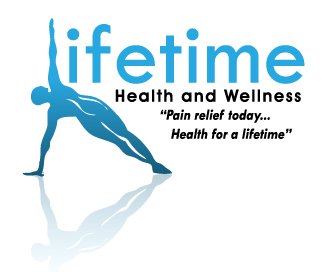If you want to build any structure, a strong foundation is one of the key components. The human body is no different. Alignment of the bones in the feet can influence the functional stability of the rest of the body! Each foot contains 26 bones. It takes 33 joints, 107 ligaments, 19 muscles and numerous tendons to hold the bones in place and to allow for proper movement. As a musculoskeletal specialist, your South Elgin chiropractor Dr Tim Schening, is well-aware of the amount of brain-body coordination needed to keep these structures working properly.
Syndromes Related to Your Feet The following is a list of common conditions that are related to your feet, plus recommended solutions from your chiropractor.
Plantar Fasciitis – a painful conditioninvolving inflammation of the soft tissue in the arch of the foot. This condition is usually related to overuse or fallingarches.Icing and rest help to decrease pain, and muscle or joint manipulation can help restore proper function. Orthotic shoe inserts may also help provide structural support and reduce strain.1
Shin Pain – often caused by strain of the posterior and anterior tibialis muscles. These two muscles help give the arch of your foot mechanical support during walking or running. With increased stress due to repetitive use or falling arches, strain on the tendons of these muscles can cause the muscles to pull away from their bony attachments on the shin. This can cause periostitis, better known as shin splints. Improper footwear, combined with increased physical activity, is often the culprit. Rest, ice, muscle manipulation and orthotic inserts can help with this condition.2
Iliotibial Tract Syndrome (IT band syndrome) – pain located on the lateral side of the knee, thigh and hip, related to an inflammation of the tendon of the TFL muscle as it crosses the knee. This is one of the most common leg/hip syndromes found in runners, and it can be related to instability of the foot or pelvic misalignment. It is very often related to over-pronation of the foot, whereby the ankle joint turns inward – usually associated with falling arches. Chiropractic adjustments for the pelvis, foot and knee joints may help, as well as muscle manipulation, reduced exercise, and orthotic inserts to correct for the over-pronation.
Stress fractures – represent incomplete fractures (cracks) in any bone that is under an increased mechanical load. This condition is usually related to a structural imbalance, which creates an abnormal distribution of stress and strain. Rest is often the only treatment that helps mend this problem. Your chiropractor should also check the movement and alignmentof the feet and/or pelvis to help identify potential causes for the abnormal stress patterns.
Nerve Pain/Sciatica – radiating pain from nerve irritation/inflammation can be felt in the feet. Numbness, tingling, burning or aching pain can be a sign of lumbar nerve irritation. Disc herniation is a common cause of nerve root irritation. Chiropractic adjustments are often used to help balance the mechanical causes of disc herniations.
Pelvic Conditions – with respect to the kinetic chain, imbalances in foot bio-mechanics can lead to imbalances in pelvic mechanics. Restrictions or instability in the joints of the feet can lead to recurring symptoms in your pelvis and lower back.3 Common painful syndromes in the pelvis may include SI joint dysfunction, piriformis syndrome, and lumbar facet joint irritation. If your chiropractic adjustments are not holding as long as you’d like, you should have your chiropractor check your feet. Bouts of low back and pelvic pain that follow increased periods of walking, running or climbing may be pointing to the mechanical instability of your body’s foundation.
How to Take Care of Your Feet There are several things you can do to keep your feet healthy.Avoid activities that cause recurring pain in your feet, knees or hips.Wear appropriate, properly-fitting athletic shoes when you exercise. It is recommended you replace your athletic shoes at least once per year if you exercise at least once a week. Orthotic inserts, when required, can provide customized support for your feet in every shoe that you wear. Be sure to have Dr Schening check the mechanical movement patterns of your feet, knees and hips when walking or running. A routine gait analysis can pick up minor imbalances before they create major problems.Active lifestyles are also recommended to stay healthy. The best form of general exercise is walking. A gentle weight-bearing exercise like walking is known to help improve circulation, contribute to weight control and promote overall well being. Be sure to have your feet checked by chiropractor on a regular basis to ensure that they continue to take you where you want to go in a pain-free way.
References and Sources:1. Karl B. Landorf, Anne-Maree Keenan, and Robert D. Herbert Effectiveness of Different Types of Foot Orthoses for the Treatment of Plantar Fasciitis J Am Podiatr Med Assoc 2004 94: 542-549.2. Nawoczenski DA, Ludewig PM: Electromyographic effects of foot orthotics on selected lower extremity muscles during running. Arch Phys Med Rehab, 80:540-544, 1999.3. Dananberg HJ, Guiliano M: Chronic low-back pain and its response to custom-made foot orthoses.Journal of the American Podiatric Medical Association 1999; 89(3): 109-117.
